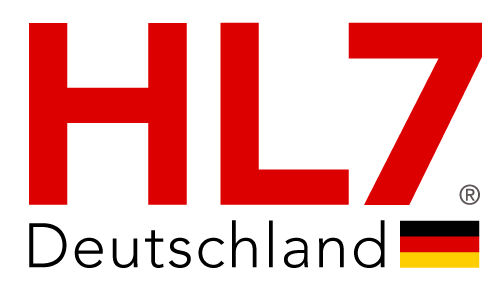Spezifikation EFA 2.0
|
|
Dieses Dokument gibt wieder:
Implementierungsleitfaden Spezifikation EFA 2.0 (0.9). Die Teilmaterialien gehören der Kategorie cdaefa an. |
February 2013
Jörg Caumanns, Raik Kuhlisch
Einleitung
The Electronic Case Record (Elektronische Fallakte, EFA) is an initiative launched by the stationary sector - i.e. Germany’s hospitals and clinics - in 2006. Since 2009 it is operated by the Electronic CaseRecord Association (»Verein Elektronische Fall¬akte«), which is an interest group of major German hospitals, hospital chains, healthcare associations, and regional healthcare networks.
Electronic case records provide a structured and integrated viewpoint of medical data that can be associated with an individual patient. A case begins with an initial diagnosis and integrates as many instances of billing or treatment as required. A physician oversees the EFA, with the various attending physicians having responsibility for the contents and their completeness.
The decentralized handling and maintenance of case records is based on the metaphor of a supply network as a community of interest composed of autonomous actors working on a specific task. Since it is generally preferred that the place, where medical data and administrative information (e.g. user accounts) is stored, remains constant, the case record can be implemented in existing networks very simply, facilitating the initiation of co-operation at the regional level.
EFA Spezifikation v2.0
Nach einer nur im Rahmen eines Proof-of-Concept implementierten Version 1.0 der EFA-Spezifikation wurde im Februar 2008 mit der EFA Version 1.2 das erste öffentliche Major-Release der EFA-Spezifikation von den Trägern der EFA-Initiative freigegeben. Bereits Ende 2008 konnten drei namhafte Hersteller (Siemens, ISPro, iSoft) auf dem ersten EFA-Connectathon Produkte präsentieren, die die interoperablen Schnittstellen der EFA implementierten und so miteinander in einem Peer-to-Peer Netzwerk zusammengeschaltet werden konnten. In den folgenden Jahren wurden in verschiedenen Bundesländern EFA-Pilotprojekte gestartet und 2011 konnte am Städtischen Klinikum München das erste regionale EFA-Netzwerk in den Regelbetrieb überführt werden.
Während die EFA-Sicherheitsarchitektur auch fünf Jahre nach ihrer Veröffentlichung noch dem State-of-the-Art entspricht (und durch Übernahme in Projekte wie z.B. epSOS den State-of-the-Art auch mit geprägt hat) haben sich in dieser Zeit im Bereich der Fachschnittstellen von elektronischen Aktensystemen die meisten Hersteller mit ihren Produkten in Richtung des IHE-Profils XDS bewegt, das von der EFA Version 1.2 lediglich logisch aber nicht syntaktisch berücksichtigt wurde - wobei auch die Synchronizität der EFA-Abläufe zu IHE XDS auf die Ebene der Dokumentenverwaltung beschränkt ist und die übergeordneten EFA-Konzepte (Fallakte, Ordner) nicht abdeckt.
Im März 2012 haben daher der EFA-Verein als Träger der EFA-Spezifikation und der bvitg als Vertreter der ambulanten und stationören Sektor tätigen Hersteller beschlossen, gemeinsam eine Version 2.0 der EFA-Spezifiation zu erarbeiten. Diese Version soll
- auf den bewährten und in verschiedenen Gesundheitsnetzen erfolgreich erprobten Kernprinzipien und -konzepten der EFA v1.2 aufbauen
- in Produkten der Industrie verfügbare Schnittstellenstandards aufgreifen und
- durch Verzahnung mit dem "IHE Cookbook" auf Basis generischer XDS-konformer Lösungsbausteine elektronischer Akten implementierbar sein.
Aufbau der Spezifikation
| Enterprise Dimension | Information Dimension | Computational Dimension | |
| Conceptual Perspective |
|
||
| Logical Perspective | |||
| Implementable Perspective |
The columns of the matrix focus on certain characteristics of the system to be analyzed and specified:
- The Enterprise Dimension defines the business and reference context and is concerned with EFA business objectives and EFA business processes.
- The Information Dimension is concerned with the EFA information model and constraints on the use and interpretation of that information.
- The Computational Dimension is concerned with the EFA functional decomposition into a set of actors that exhibit specific behaviors and interact through transactions.
The rows of the matrix reflect different levels of abstraction and are targeted at different expert groups:
- The Conceptual Perspective is almost computational independent as its focus is on the problem space rather than on a concrete solution. Conceptual-level artifacts sketch the essentials and core concepts of EFA from a domain matter expert’s point of view and as such define the holistic conceptual model of EFA.
- Artifacts in the Logical Perspective represent traceable translations of conceptual-level artifacts into a form/format usable by and useful to architects and inward-facing analysts. This perspective provides the functional/logical specification of EFA and defines the EFA solution space with its classes, services and operations.
- Artifacts in the Implementable Perspective contain all of the necessary technical bindings – e.g. data types, value sets, interface specifications, etc. – that will enable developers to implement the building blocks of the functional/logical specification by standards-based technical components.
